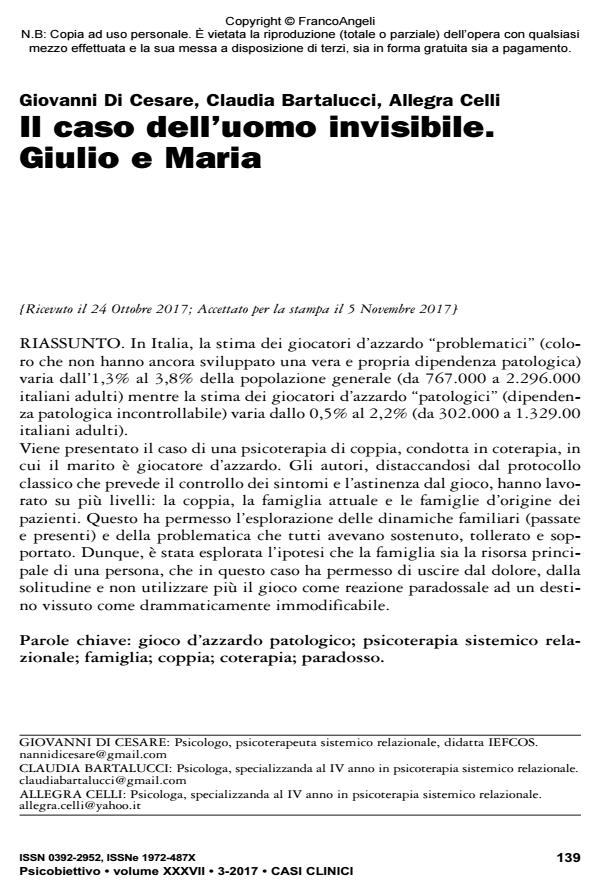The case of the invisible man. Giulio e Maria
Journal title PSICOBIETTIVO
Author/s Giovanni Di Cesare, Claudia Bartalucci, Allegra Celli
Publishing Year 2017 Issue 2017/3
Language Italian Pages 13 P. 139-151 File size 103 KB
DOI 10.3280/PSOB2017-003007
DOI is like a bar code for intellectual property: to have more infomation
click here
Below, you can see the article first page
If you want to buy this article in PDF format, you can do it, following the instructions to buy download credits

FrancoAngeli is member of Publishers International Linking Association, Inc (PILA), a not-for-profit association which run the CrossRef service enabling links to and from online scholarly content.
Italy, the estimated number of "problematic" gamblers (those that haven’t yet developed a pathological addiction) varies between 1,3% and 3,8% of the population (from 767.000 to 2.296.000 adult Italians) while the estimate of pathological gamblers (those with an uncontrollable pathological addiction) varies between 0,5% and 2,2% (from 302.000 to 1.329.000 adult Italians). A Relationship Counseling case is presented, conducted in co-therapy where the husband is the gambler. The authors decided to step away from the traditional protocol, which foresees controlling the symptoms and exercising abstinence from gambling. They decided to approach the case on multiple levels analyzing the couple, the current family and the family of origin of the patients. This new approach allowed an exploration of the family dynamics, both past, and present, as well as providing an opportunity to research the issues that each family member had tolerated and bared through its existence. This innovative method paved the way for the development of a new hypothesis where the family represents a person’s central resource. In the case examined, the family helped to free the gambler from the pain and solitude giving him a chance to not use gambling as a paradoxical reaction to a destiny experienced as dramatically fixed.
Keywords: Pathological Gambling; Systemic Relational Psychotherapy; Family; Couple; Cotherapy; Paradox.
Giovanni Di Cesare, Claudia Bartalucci, Allegra Celli, Il caso dell’uomo invisibile. Giulio e Maria in "PSICOBIETTIVO" 3/2017, pp 139-151, DOI: 10.3280/PSOB2017-003007